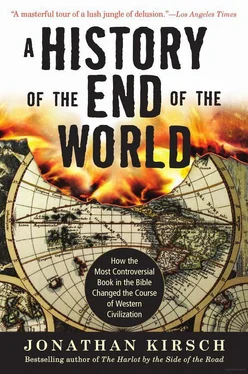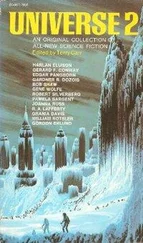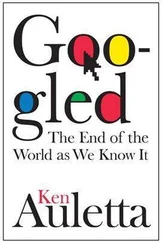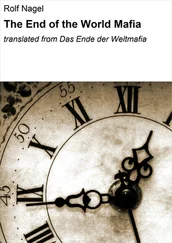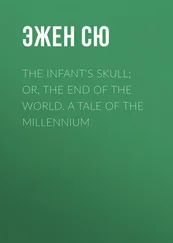“And in those days men will seek death and will not find it,” writes the author of Revelation in one almost poignant passage. “They will long to die, and death will fly from them.” 32
After seven years of suffering under the Beast, Jesus Christ will descend to earth as a mounted warrior-king at the head of an army of angels and resurrected saints and martyrs, and a decisive battle will be fought at a place called Armageddon. The author of Revelation delights in describing the revenge that the Lamb of God will take on those who once tormented his faithful worshippers. “Come, gather for the great supper of God,” an angel will cry to the birds of prey, “to eat the flesh of kings, the flesh of captains, the flesh of mighty men, the flesh of horses and their riders, and the flesh of all men, both free and slave, both small and great.” 33
Satan will be bound in chains and confined in a bottomless pit, and the survivors of the Tribulation will live in an earthly kingdom under the authority of King Jesus and his resurrected saints and martyrs for exactly one thousand years. But the end-times are not quite over yet. Satan will break his fetters, and Jesus Christ will be forced to go to war yet again against his archenemy and the far-flung nations that are the Devil’s human allies, now called “Gog and Magog.” Only then will Satan and his minions be cast once and for all into “the lake of fire and brimstone,” where they will be “tormented day and night for ever and ever.” 34
Now, at last, our benighted world—“the first earth”—will be brought to an end. Everyone who has ever lived will be resurrected, and living and dead alike will be judged and rewarded or punished as God sees fit. And the litmus test for salvation is true belief: “Those who keep the commandments of God and the faith of Jesus” will be permitted to spend eternity in perfect bliss in the new heaven. Everyone else—men, women, and children—will be cast into the lake of fire and brimstone, “which is the second death,” along with the Devil and “the cowardly, the faithless, the polluted, murderers, fornicators, sorcerers, idolaters, and all liars.” 35
Revelation, quite in contrast to the Gospels, is notoriously lacking in loving-kindness. Rather, it is a punishing text, full of rage and resentment, almost toxic in its longing for bloody revenge against one’s enemies. Only rarely does the author allow his readers to glimpse a kinder and gentler realm, and when he does, he explains that it will arrive only after the earth as we know it, strewn with corpses and flooded “as high as a horse’s bridle” with blood, is finally destroyed. And only “the ones who come out of the great tribulation,” the ones who have “washed their robes and made them white in the blood of the Lamb,” will be granted admission to a celestial paradise. 36
“He will wipe away every tear from their eyes, and death shall be no more,” writes the author in a rare and almost grudging moment of tenderness and compassion. “[N]either shall there be mourning nor crying nor pain any more, for the former things have passed away.” 37
For all of its Sturm und Drang, then, the book of Revelation offers a happy ending, at least for “them which are saved.” 38Everyone on earth in the end-times is destined to suffer horribly at the hands of the Antichrist—and most of them will die just as horribly—but a select few will be resurrected, judged, and granted eternal life in the world to come. The yearning to be counted among the saved, and the loathing of everyone who is not saved, turns out to be one of the great engines of history.
No better example can be found than the ancient but enduring practice of linking the Antichrist to a living historical figure. The “beast” of Revelation has been a man of all seasons: Muhammad was seen as the Antichrist in the early Middle Ages, Saladin at the time of the Crusades, the Grand Sultan of the Ottoman Turks when they threatened the gates of Vienna, Napoleon in the aftermath of the French Revolution. Martin Luther denounced the pope (or, more precisely, the papacy) as the Anti-christ, and the pope returned the favor. Each generation churns up its own candidates: Lenin and Stalin, Hitler and Mussolini, Roosevelt and Kennedy, Moshe Dayan and Anwar el-Sadat have all been proposed at various times as the human manifestation of the Beast.
Speculation on the identity of the Antichrist, in fact, can be seen as a kind of Rorschach test for the anxieties of any given age. Henry Kissinger, for example, came under suspicion when he was shuttling between Washington, Moscow, and Beijing in the 1970s, and the Ayatollah Khomeini was first nominated only after Americans were taken hostage in Tehran during the aftermath of the Islamic Revolution in Iran in 1979. Only a few years ago, Saddam Hussein was seen as a promising contender; significantly, the best-selling Left Behind series identifies Baghdad as the seat of its fictional Antichrist. Nowadays, of course, Osama bin Laden seems to have taken Saddam’s place as the satanic adversary whose coming is predicted in Revelation.
A closely related enterprise is the effort to crack the code that the author of Revelation planted so intriguingly in his text—the identity of the “beast” whose name is symbolized by the number 666. As we shall see, there is a convincing answer to the question: 666 is an alphanumeric code that can be translated into the Greek, Latin, or Hebrew name of the human being whom the author of Revelation regards as a tool of Satan. But that hasn’t stopped the biblical code-breakers, amateurs and professionals alike, from wringing new and ever more exotic meanings out of the same bloodcurdling number.
The imagery of Revelation, as we shall see, meant something quite specific—and quite different—to its author and his first readers and hearers. But the fact that we are able to understand what the “number of the beast” and the Great Whore of Babylon actually meant to a Christian visionary of Jewish birth in Asia Minor in the first century has never deterred subsequent generations from finding entirely different meanings for themselves. That’s the strange and powerful magic of Revelation: each new generation of readers is convinced that God planted a secret meaning in the text that was meant only and especially for them. And, remarkably, the failure of each previous generation to crack the Revelation code only encourages the next generation to try harder.
As a work of prophecy, of course, Revelation is wholly and self-evidently wrong. “How long, O Lord, holy and true, until you judge and avenge our blood on those who dwell on the earth?” demands the biblical author, quoting the souls of the dead martyrs, and he answers his own question by attributing an unambiguous promise to Jesus Christ: “Behold, I am coming soon.” 39Those words were first reduced to writing nearly two thousand years ago, but the readers of Revelation are still waiting for the day of revenge that is predicted with such clarity and confidence in the ancient text.
The author of Revelation is not the only figure in Christian scriptures whose prediction of the end-times was mistaken. Jesus, according to some awkward sayings attributed to him in the Gospels, assures his followers that at least some of them will see the end of the world with their own eyes. The apostle Paul, in turn, offered the same assurance to his generation of Christians. Both Jesus and Paul were gone by the time the author of Revelation set down his vision of “things which must shortly come to pass.” 40All of them turned out to be dead wrong, and the world is still here.
The utter, obvious, and persistent failure of the world to “end on time,” as one contemporary Bible scholar wryly puts it, has compelled Christianity to reconsider how life ought to be lived in the here and now, no less in late antiquity than today. 41Once a Christian emperor seated himself on the imperial throne of pagan Rome in the early fourth century, all the bitter rhetoric of Revelation, so clearly aimed at the power and glory of the Roman Empire, was suddenly an embarrassment that needed to be explained away. By late antiquity, Revelation suddenly seemed less relevant than, say, the Gospel of Mark: “But when you hear of wars and rumors of war, do not be troubled,” Jesus is shown to sensibly caution his followers, “for such things must happen, but the end is not yet.” 42
Читать дальше
